Places to visit in Europe in August: Travel Destinations promise unforgettable experiences and memories to last a lifetime! August in Europe with family or solo travel, is a time of vibrant festivals, sunny beaches, and picturesque landscapes. As with the beautiful summer, the continent offers a diverse range of destinations that are perfect for every type of traveller. Whether you’re seeking cultural immersion, coastal relaxation, or breathtaking natural scenery, Europe has it all. From the romantic streets of Paris to the stunning beaches of the Greek islands, we have made a list of the countries in Europe to visit this August.
Italy
The Top Cities in Italy for Travelers
- Tuscany: You must visit Florence, but due to the many tourists, consider staying in Lucca and taking a day trip to Florence.
- Venice: Enjoy the Grand Canal and have a Spritz Aperol while admiring the view.
- Bari: Known for its rich history and as a filming location for movies like James Bond.
- Ravenna: A Byzantine gem with ancient churches and beautiful mosaics dating back to the 500 AD.
- Bologna: A historic city in the Emilia-Romagna region, known for its towers and Gothic architecture.

Greece
Popular ancient historic sites with cliffs that plunge into the warm Mediterranean. Best places to visit in Europe in August with family & to have fun alone, you must see beautiful sites from boarding ferries to islands like Santorini, Mykonos, Zakynthos, Corfu, and Crete.
Acropolis, Athens: it can be a best place to visit, it is a rocky outcrop in the center of Athens, topped by three beautiful 5th-century BC temples. The Parthenon, supported by 58 columns and adorned with a pediment and frieze (Triangular structure above building’s entrance & Decorative horizontal band on walls.), is the most well-known. The Archaeological Promenade (2.5 km walking route) connects the Acropolis to other ancient sites like the:
- Ancient Agora,
- Roman Forum,
- Kerameikos,
- the Temple of Olympian Zeus.
Santorini island : Known for the cliff-top settlements of Fira and Oia (appear to hang over a deep blue caldera). it is a Popular island for weddings and honeymoons, these towns feature whitewashed cubic houses turned into boutique hotels. if you want to Visit the archaeological sites then visit Akrotiri and enjoy the black volcanic sand beaches. Travel from Piraeus to Santorini’s airport you can use the Ferries and catamarans.
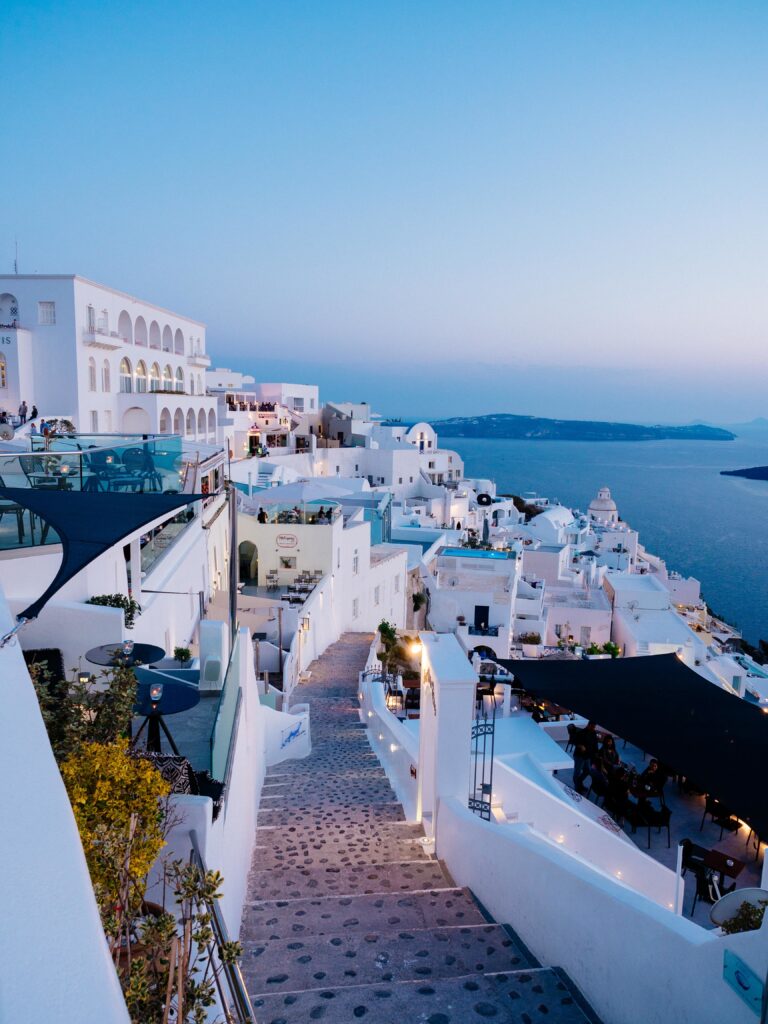
designed by freepik
Mykonos: Greece’s most opulent island getaway, known for GOOD seafood restaurants, boutique hotels, and vibrant nightlife. The island’s south shore has many sandy beaches, and Mykonos Town features the picturesque whitewashed church Paraportiani. The island is connected to Athens by ferry and catamaran, and it has its own airport.
Crete: Greece’s largest island, known for its beautiful beaches and significant archaeological sites like the Palace of Knossos. The cities of Heraklion, Agios Nikolaos, and Chania offer stunning shorelines. For a more tranquil experience, visit smaller villages on the south coast, or hike the Samaria Gorge.
Corfu: Located in the Ionian Sea, Corfu is known for its Italianate architecture in Corfu Town (a UNESCO World Heritage site). The island’s lush landscapes feature rugged cliffs and green hills. Paleokastritsa is the most visited beach area. Corfu is connected to the mainland by an airport and ferries.
Meteora Monasteries: On the Thessaly plain, these monasteries perched on rocky outcrops are a unique sight. Six of them are open to the public and feature sacred objects and Byzantine paintings. Kalabaka, the closest town, offers modest accommodations and local cuisine.
Rhodes: The largest of the Dodecanese islands, Rhodes is near Turkey and has a UNESCO-designated capital, Rhodes Town. Notable for its medieval towers and gates built by the Knights of Saint John, the island also offers boat excursions to Marmaris and the scenic village of Lindos. Rhodes is accessible via ferry and has an airport.
Zakynthos: A stunning island in the Ionian Sea known for Shipwreck Beach and the Blue Caves. The island is a popular destination for scuba diving and snorkeling. It is located 16 km off the west coast of the Peloponnese.
Paros: A less crowded alternative to Santorini, Paros offers beautiful beaches, lush valleys, rolling hills, and charming villages. It provides a more relaxed environment with less expensive lodging, making it a great option for those on a smaller budget. Paros is often compared to Mykonos for its scenery and atmosphere.
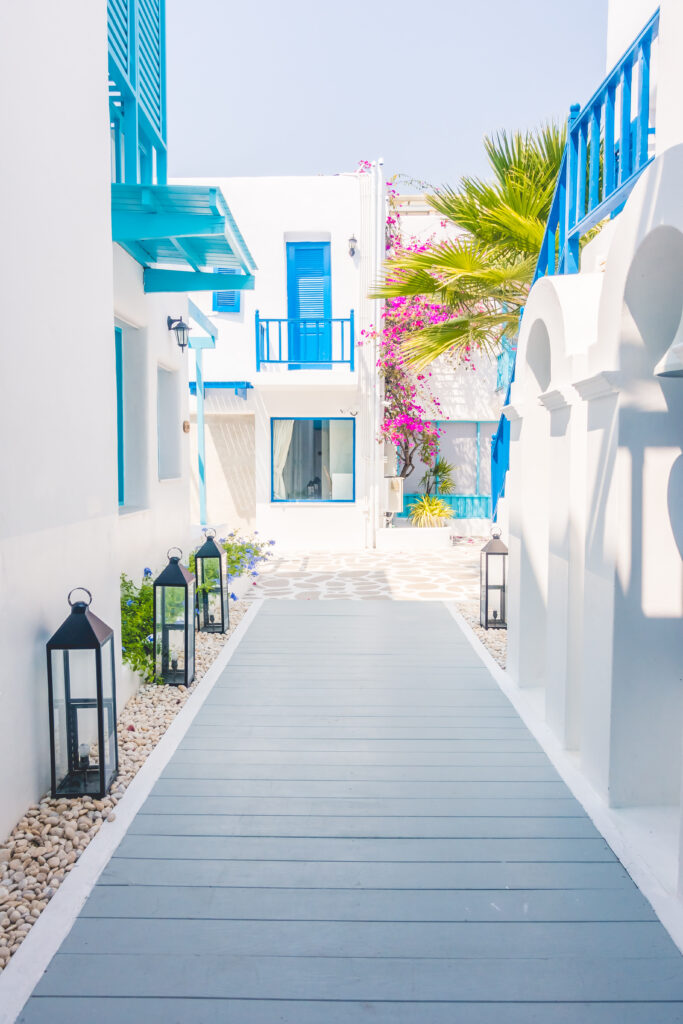
Beautiful Architecture building Exterior with santorini and greece style
France
There is a reason that France is the most popular destination in Europe. It is home to some of the most beautiful cities, towns, and countrysides in the world. From large international metropolises with art galleries and museums to charming coastal towns perfect for summer getaways, millions of tourists come back every year just to experience the beauty of France. For some, it is the beaches of the Mediterranean sun; for others, it is the ski slopes of the Alps and the lavender fields of Provence. Whether seeking an action-packed sightseeing adventure or a relaxing wine retreat, you’ll find a fun in French vacations.
Paris: Paris boasts the best architecture and iconic landmarks of France, like the Louvre, Eiffel Tower, and Notre Dame Cathedral, which are among the top places to visit in the city. You will find the finest pieces of art and culture in the top museums of Paris, alongside shopping streets, historical charms, and much more while exploring the city. Walk the Promenade Plantée or enjoy a picnic in the Luxembourg Gardens.
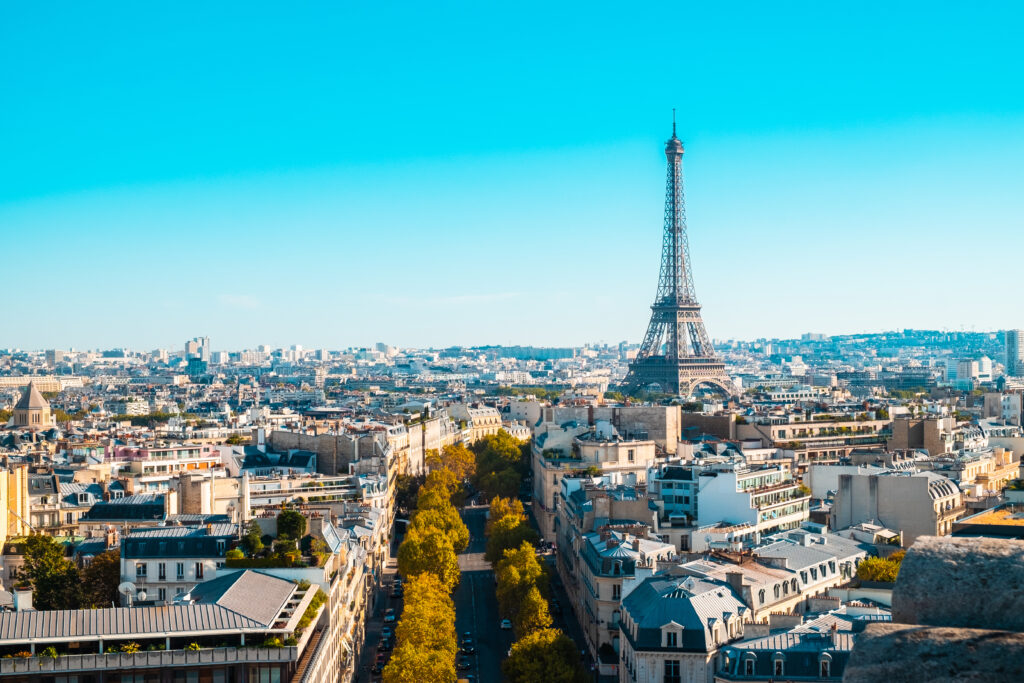
Paris, FRANCE. Designed by freepik
Colmar: One of the jewels of Alsace and one of the most beautiful tourist attractions, Colmar is a charming town in the Grand Est region of northeastern France, close to the border with Germany. Colorful houses that look as if they belong in a fairy tale, the Little Venice district where you can take a boat through Colmar’s canals or reach boutiques and eateries on foot. Visit Colmar at night when lights illuminate the city during annual events like the Colmar International and Alsace Wine Fair and the Colmar Christmas Market. It is a very romantic place to visit in France.
Verdon Gorge: If you are looking for the best regional parks in France, visiting Verdon Gorge is a must. Perched within the Verdon Natural Regional Park, it is a great spot for swimming, hiking, and kayaking. Among the natural beauty of the scenic road trip, it is the turquoise color of the water that strikes the most.
French Alps: For outdoor enthusiasts, it is hard to beat the breathtaking natural scenery of the French Alps. Mont Blanc is the highest mountain in all of Europe, and its snow-capped peak is majestic. With lakes, valleys, dramatic waterfalls, and forests, it is one of the best places to visit in France, offering several places to unwind when you are not having fun on the slopes or trails.
Lyon: Lyon is the third largest city in France, located between the Rhône and Saône rivers close to the Alps and the Mediterranean, . It is a city that shouldn’t be missed while traveling. Built in the 12th century, it is a historic city with rich culture and beautiful architecture. The World Heritage city is home to some of the world’s most precious ancient ruins, Roman structures, and medieval buildings. The Place Neuve Saint Jean is also a must-see, a picturesque square with many shops and traditional restaurants, perfect for a romantic dinner. Lyon is at the heart of French gastronomy, famous for its delicious regional specialties such as quenelles, meat dishes, sausages, and salads.
Bordeaux: Bordeaux is one of France’s most important wine-producing regions, home to over 6,000 vineyards and offering some of the world’s finest wines. The region boasts two exceptional World Heritage sites:
- the elegant city of Bordeaux, with more than 350 buildings classified as historical
- monuments, the country village of Saint-Émilion, 51 km from Bordeaux
With a rich Christian heritage dating back to the 8th century, Saint-Émilion is filled with notable churches and monasteries. Bordeaux is packed with places where you can sit, relax.
Normandy: Famous for its Camembert cheese, apple orchards, and historic castles, this verdant region took its name from the Viking conquerors who settled here in the 9th century. With gorgeous beaches, stunning architecture, and some of France’s finest seafood, Normandy has something for everyone. Norman history has always been tied to the sea, from the earliest Viking raids and the conquest of England in 1066 to the darkest moments of the Second World War. Normandy has one of France’s most famous tourist sites, the stunning Mont Saint-Michel. Known as the Pyramid of the Sea, this little rocky islet off the coast of Normandy was built between the 11th and 13th centuries.
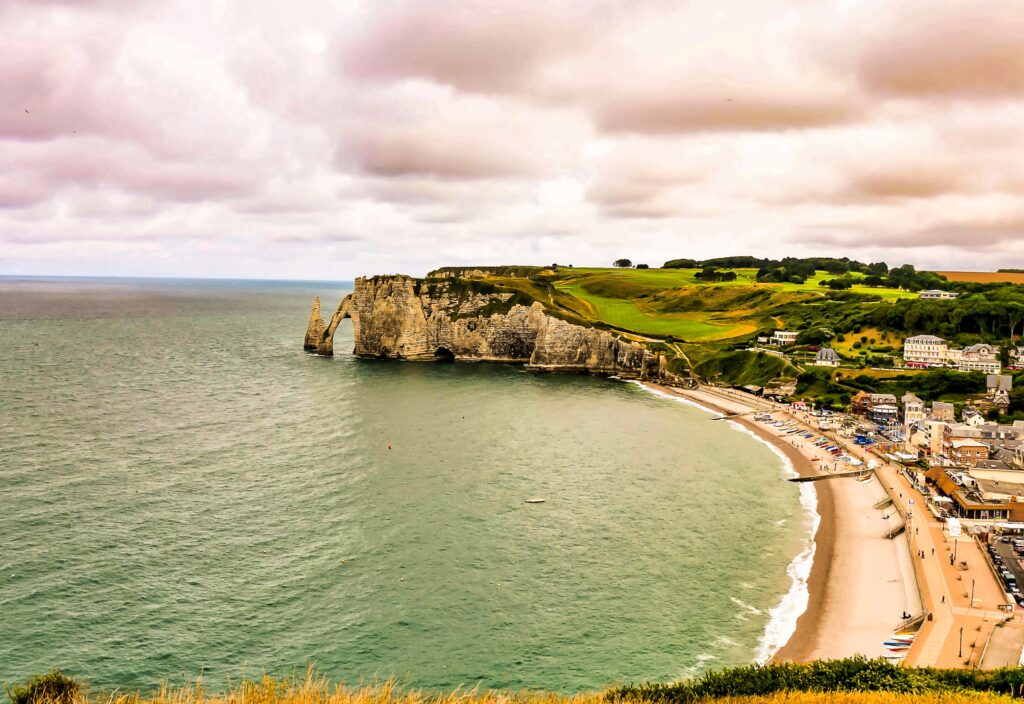
Normandy, France by freepik
Nice: This lovely coastal town located on the Côte d’Azur is where you will find some of the nicest beaches in France. With a beautiful old town, stunning beaches, and delicious food, Nice offers something for everyone. The historic part of Nice, the Old Town (Vieux Ville), feels like a medieval village with narrow streets curving between old buildings with red tile roofs, old restaurants, and open markets.
Germany
Best known for its famous Oktoberfest and World War II history, Germany is also home to some of Europe’s most beautiful scenery, fairytale castles, important historic sites, and a lively party scene. Located in the heart of Europe, Germany boasts the continent’s most powerful economy.
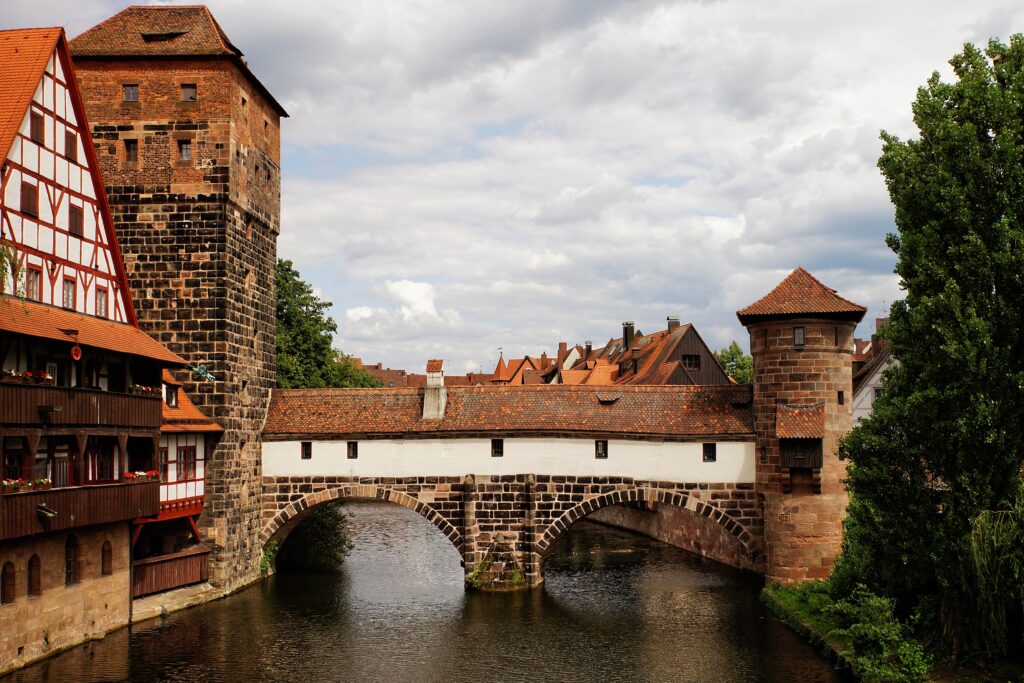
A beautiful shot of the Henkersteg Bridge Nuremberg Germany on a cloudy daylight
Rothenburg: The walled city of Rothenburg sits on a plateau overlooking the Tauber River in Bavaria. Straight from the pages of a fairy tale, the town is famous for its extremely well-preserved medieval center. Be sure to visit the town hall, the seat of city government since medieval times, and climb the steps of the 13th-century hall tower for stunning views of the city. Rothenburg is also renowned for its stores that carry Christmas items all year round and its outstanding Christmas market each December.
Rügen Island: Located in the Baltic Sea, Rügen Island is the largest island in Germany, connected to the mainland by a bridge and causeway. Charming villas, romantic seaside resorts, and beautiful beaches all draw tourists’ attention. The star attraction is Jasmund National Park, famous for its unique chalk cliffs rising 528 feet over the sea. Another notable feature of Rügen Island is Cape Arkona, East Germany’s northernmost tip, where tourists can visit an old lighthouse, remnants of a Slavic castle, and a picturesque fishing village.
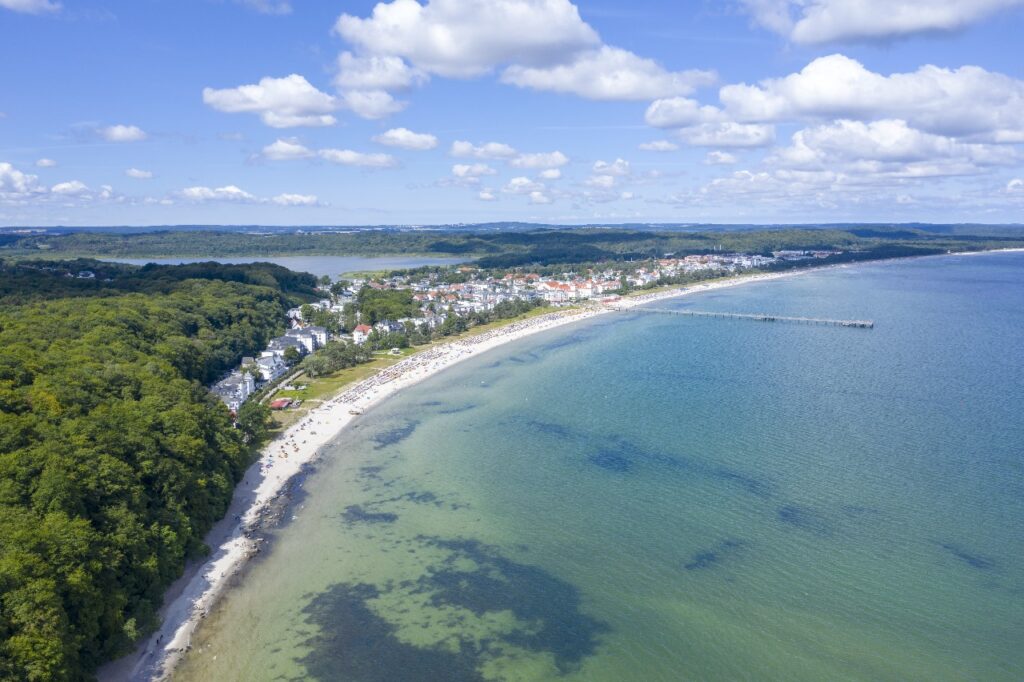
Romantic Rhine: Stretching between the cities of Bingen and Bonn, the Middle Rhine flows through a dramatic geological formation called the Rhine Gorge. This region features a spectacular landscape dotted with some 40 medieval castles, picturesque villages, and terraced vineyards. The region’s most attractive site is Lorelei, the deepest and narrowest section of the Rhine Gorge, featuring a large, treacherous rock that caused several boating accidents prior to the 19th century. The best way to experience the Romantic Rhine is by riverboat cruise.
Cologne: Situated on the Rhine River in the German federal state of North Rhine-Westphalia, Cologne is one of the most popular places to visit in Germany. The city offers a vibrant array of attractions, buzzing nightlife, and a stellar art and culture scene. Cologne is also packed with impressive landmarks, such as the city’s informal symbol, the Cologne Cathedral, a stunning Gothic church. Moreover, the twelve Romanesque churches are magnificent examples of medieval architecture.
Dresden: Before it was severely damaged during World War II, Dresden was known as the “Jewel Box” because of its lavish collection of stunning art and architecture. After many years, the city has restored much of its former glory. The capital of the federal state of Saxony, Dresden offers a number of historic sites, like the stunning Frauenkirche cathedral. The city also boasts many cultural institutions, of which the Semper Opera is the most widely esteemed.
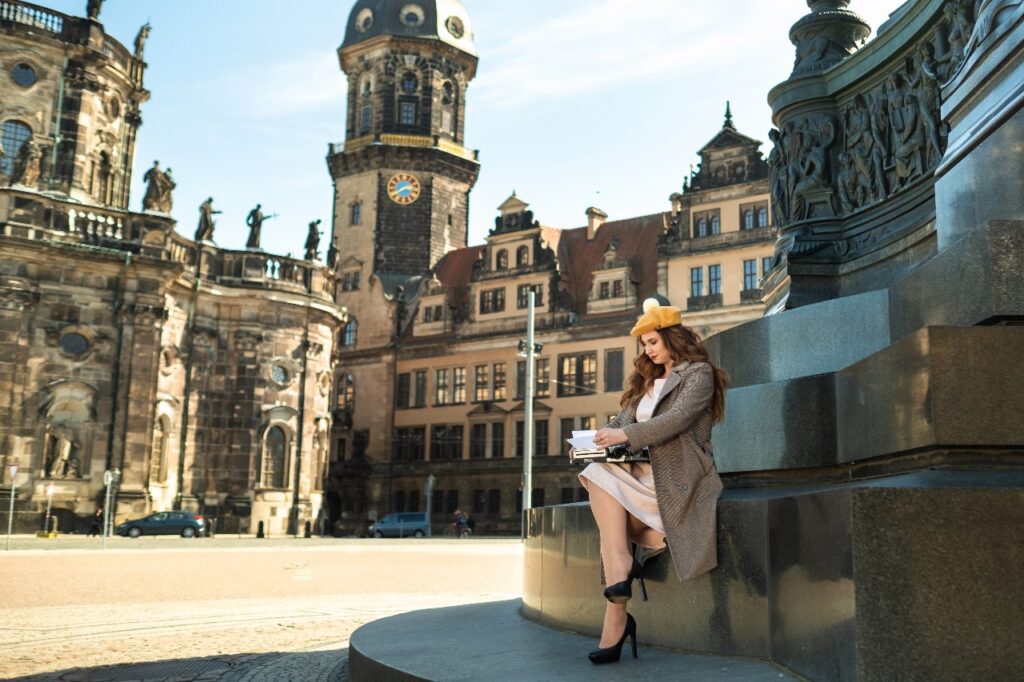
Lübeck: As one of the largest Baltic seaports in Germany, Lübeck is located in the country’s northernmost state, Schleswig-Holstein. Founded in 1143, Lübeck served for several centuries as the capital seat of the Hanseatic League. Although it was the first German city to be bombed and damaged during World War II, Lübeck still retains much of its medieval architecture, making it a popular tourist destination. A walk through the narrow streets of the Altstadt offers views of historic sites like the stunning cathedral, the 12th-century town hall, and old city gates, the most famous of which is the Holstentor.
Heidelberg: With historic treasures like the Church of the Holy Spirit and the Knight St. George House, it is no wonder that Heidelberg is a popular tourist attraction. The city’s central main street is packed with pubs, restaurants, museums, and art galleries selling the likes of beer steins, cuckoo clocks, and German sausages. Home to Germany’s oldest university, Heidelberg’s long academic history can be retraced along the Philosopher’s Walk, a scenic footpath often walked by many earlier philosophers and professors.
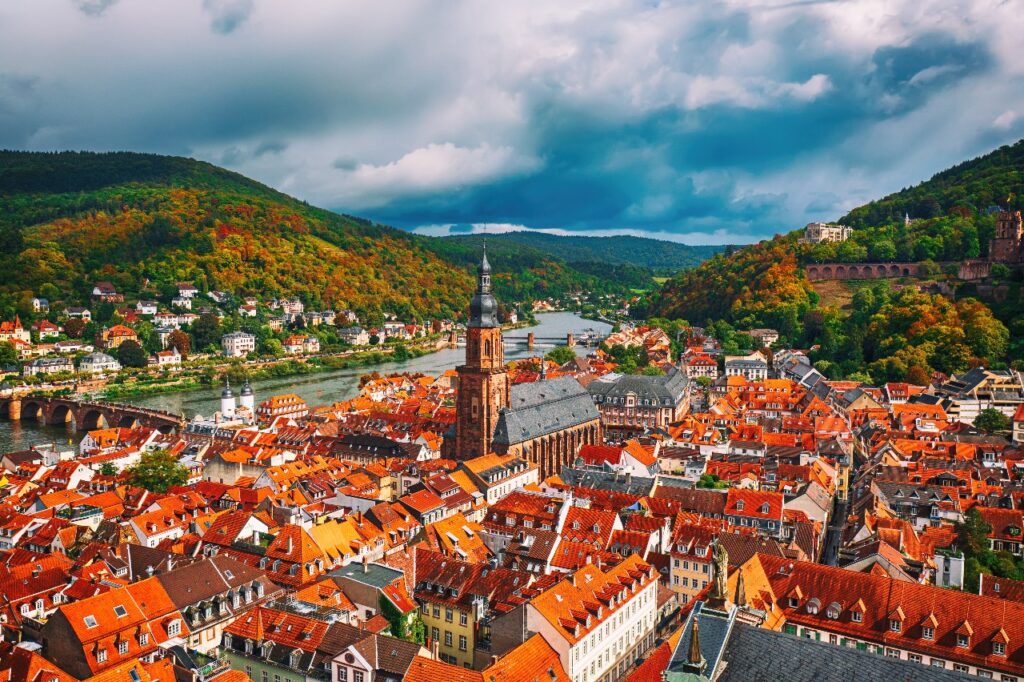 Spain
Spain
It is best known for its history and beautiful well-constructed architecture of the building and ancient sites. if you want to experience the nature and beauty then it is the best places to visit in Europe in August
Granada: Located at the base of the Sierra Nevada mountains in southern Spain, Granada is the capital of the Granada province. It offers a perfect blend of traditional culture, animated nightlife, and spectacular attractions, including the world-famous Alhambra—a pinnacle of Moorish art that encapsulates Andalusian history. This medieval complex overlooking Granada is one of the great architectural sights of Europe, attracting many visitors who come expressly to see the Alhambra. As the last Moorish stronghold in Europe, the Alhambra offers visitors splendid ornamental architecture, spectacular and lush gardens, cascading and dripping water features, and breathtaking views of the city below.

View of the famous Alhambra palace in Granada from Sacromonte quarter, Spain.
Mallorca: One of Spain’s most popular Balearic Islands, Mallorca is a celebrated beach escape that enjoys 300 days of sunshine every year. With quiet coves, limestone mountains, citrus
orchards, and sleepy stone villages overlooking the Mediterranean, it’s perfect for relaxing. But there is much more to Mallorca than meets the eye. The island is also home to several Roman and Moorish ruins, as well as a vibrant nightlife in the capital city of Palma. For those interested in history and architecture, don’t miss the Royal Palace with its glorious Moorish design and the Palma Cathedral with its enchanting Gothic facade.
Barcelona: Located in northeastern Spain, Barcelona is one of the country’s top travel destinations, offering everything tourists look for in a European city—from historic architecture to lively shopping and buzzing nightlife. Unique to Barcelona are the architectural marvels of Spain’s famous architect Antoni Gaudí, which include the Casa Batlló and the famous Sagrada Família church. Both of these extraordinary structures feature combinations of fascinating designs, shapes, and colors. Popular activities in Barcelona include strolling along La Rambla, a tree-lined pedestrian avenue, and sunbathing on Barceloneta, one of the city’s most popular beaches.
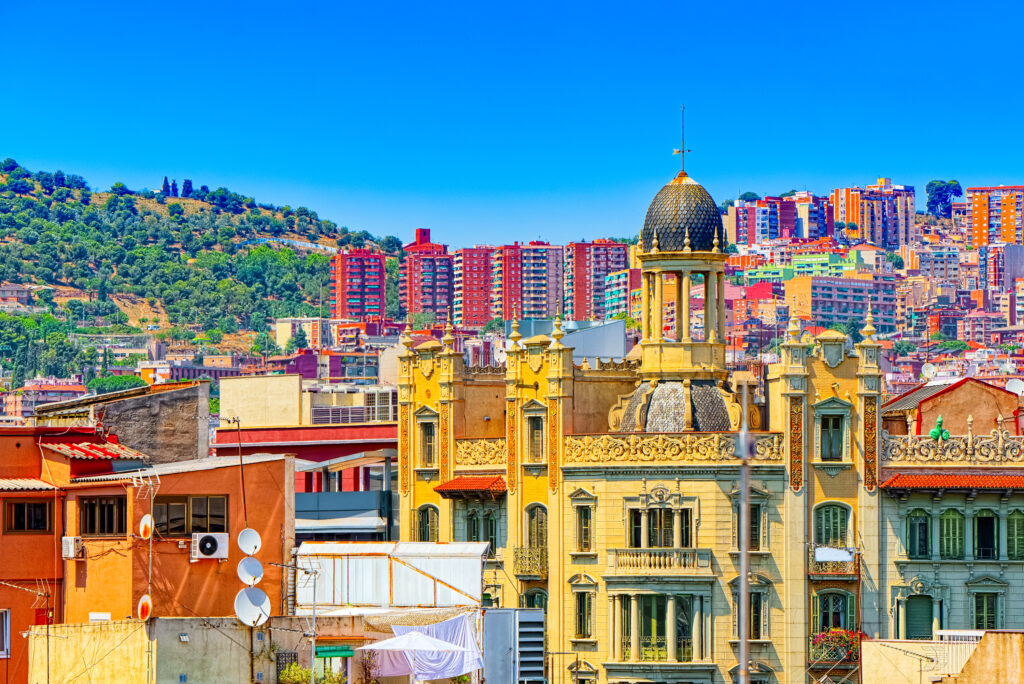
Panorama of the center of Barcelona, Spain.
Madrid: Spain’s capital and largest city, Madrid is widely known for its sizzling nightlife scene. The city is home to a diversity of ethnic groups, making it one of Europe’s most colorful cosmopolitan cities. Located within the city center are most of Madrid’s top tourist arrtaction that are best places to visit in Europe in August, such as the Royal Palace, the residence of Spain’s monarch. The heart of Madrid and Spain is Puerta del Sol, a large plaza serving as the scene of festivals, important gatherings, and street performers, as well as a hub for the public transportation network. Another important square is Plaza Mayor, known for the lively San Miguel Market.
Seville: Exceptional tourist attractions, lively festivals, and buzzing nightlife all make Seville one of the best places to visit in Spain. As the capital city of Andalusia, Seville is also the region’s financial and cultural capital. The city is home to many beautiful and important landmarks, chief among which is the grand Cathedral of Seville, where it is believed that Christopher Columbus is buried. Another significant building is the Real Alcázar, an extravagant Moorish palace with luxurious gardens.
Valencia: One of the largest and most important cities in Spain, Valencia is located in the eastern part of the country in the region of Valencia. After redirecting the Turia River, the city constructed its most impressive landmark, a massive cultural and entertainment complex known as the City of Arts and Sciences. Contained within this complex are several buildings, such as a science museum, planetarium, and aquarium, that are each artistic marvels in and of themselves. Every March, Valencia hosts the Fallas Festival, where each neighborhood displays papier-mâché figures that are ceremoniously burned at the end of the week, with the communities partying into the night.
San Sebastian: Located in the Basque Country of northern Spain, off the coast of the Bay of Biscay, this beautiful seaside city is well-loved for its excellent beaches and outstanding culinary tradition. The Old Town features many buildings reconstructed in the 19th century after the city was nearly destroyed by the Napoleonic Wars. San Sebastian also boasts some of the best beaches in Europe, with the most popular being Playa de la Concha, which offers sunbathing and water activities like swimming, kayaking, and waterskiing.
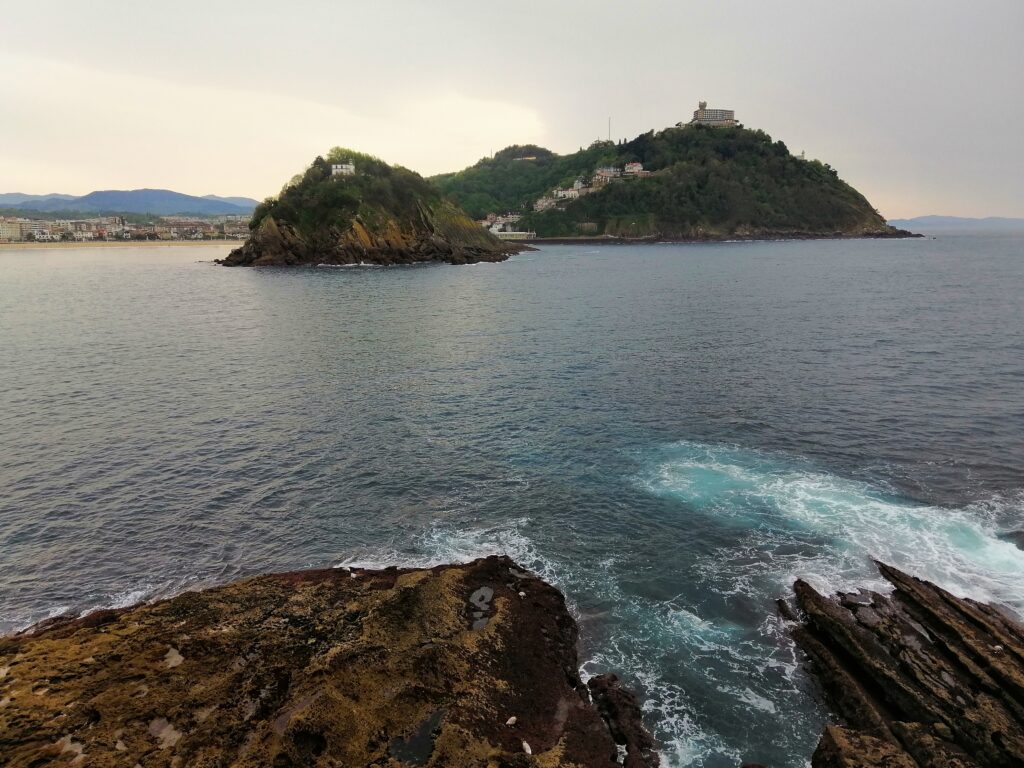
Mesmerizing beach scenery in San Sebastian, Spain
Cordoba: The capital of the Cordoba province in the Andalusian region of southern Spain, this historic quarter of Cordoba is a maze of tiny medieval streets, plazas, and whitewashed courtyards all situated around the star attraction, the Mezquita. Initially built as a mosque, the Mezquita is now a glorious cathedral retaining most of its original architecture. Its forest of columns topped with Islamic-style red and white striped arches serves as a reminder of the glory and importance Cordoba held in medieval times. Other places of interest include the Fortress of the Christian Monarchs, the Street of Flowers, and the old Jewish Quarter with its charming patios and souvenir shops.
Toledo: Perched on a mountaintop in central Spain, Toledo served as the Spanish capital until the 16th century. Because it was inhabited by Jews, Christians, and Muslims for many centuries, the city is sometimes called the “City of Three Cultures.” Today, it is popular for its wealth of historic art and architecture that dates back to the Roman Empire. The best thing to do in Toledo is to get lost amid the medieval streets and admire the old architecture that includes the stunning cathedral, synagogue, and mosque.
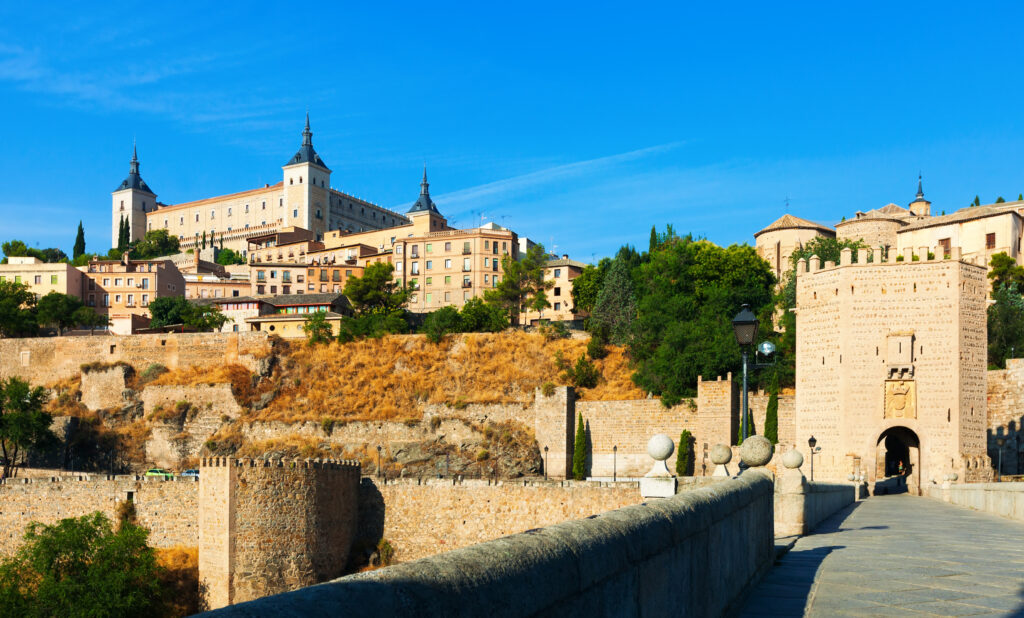
Alcazar of Toledo from Puente of Alcantara in sunny day. Toledo, Spain
Santiago de Compostela: The capital city of the Galicia region in northwestern Spain, Santiago de Compostela is famous as the final destination of the traditional pilgrimage known as the Camino de Santiago. This pilgrimage is important to many Christians because it is believed that Santiago de Compostela is where St. James, an apostle of Jesus Christ, is buried. Today, the city attracts thousands of visitors every year for both its religious traditions and history. The arriving point for most pilgrims is the main square, situated in the heart of the city’s bustling plaza, which is the scene of many important landmarks, particularly the Santiago Cathedral, where the tomb of St. James is located.
Conclusion
If you want to experience the beautiful places & scenery, ancient buildings, archeological sites and of course, the look of historical artwork and museums that can mesmerize you and make you appreciate the beauty of it all then you must visit the best places to visit in Europe in August. if you are looking for the holiday destination where you can make beautiful memories and know more about the beautiful places then you must visit one of these countries.